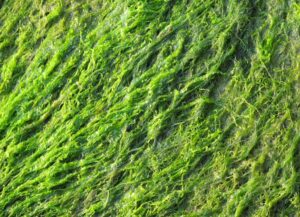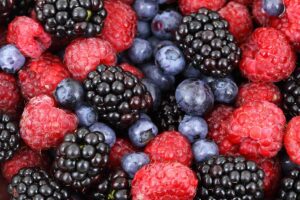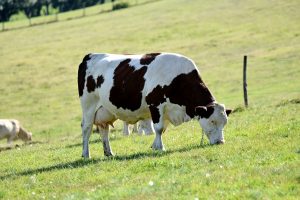Álvaro García
Protein is one of the costlier ingredients in dairy cow rations. Most of this protein usually comes from oilseed coproducts, which in many countries are not readily sourced locally and need to be imported. As a result, quality alternative protein sources are currently explored that can be produced locally at a fraction of the cost.
One such example is spirulina (Arthrospira platensis), a blue-green microalgae that grows in freshwater reservoirs. Spirulina has 55-70% protein, it grows fast in temperate/warm climates (optimum growth temperature around 35°C), provided there is carbonate in the water and plenty of sunlight.
Because of its alkali and salt tolerance it generally grows in very alkaline (pH 9-10) hard water with high salt concentrations (brackish water) particularly carbonate and bicarbonate.
One huge advantage is that it does not occupy land already allotted by farms to other crops. It is currently utilized as nutraceutical additive in the human diet, as well as in aquaculture and poultry production. Recent reports have shown that its use accounts for roughly 56 metric tons per year worldwide, with half of this volume going for animal feed, including cattle.
A constraint to its utilization is that its culture (particularly harvesting) is labor intense. Its utilization is thus more suited for smaller family operations with limited number of cows. Its use is also not devoid of some challenges since some studies have shown somewhat reduced palatability when included in concentrates and TMRs.
Nevertheless, research has shown that when fed during the transition period spirulina has not affected body weight, milk yield, milk composition, and SCC during the subsequent lactation. Other experiments have noted that its supplementation has reduced the saturated fatty acid (FA) proportion in milk and cheese and the n-6 to n-3 FA ratio.
It also imparts some nutty flavor to milk and decreases the creaminess of cheddar cheese. Spirulina however might have some animal health improvement properties, such us micronutrients and antioxidants (e.g. carotenoids, tocopherols, and phenolic acids). Its lipid fraction is not characterized by high concentration of the FA beneficial to human health such as n-3 FA, but instead n-6 FA, especially C18:3n-6 and saturated FA.
A recent trial evaluated the effects on feed intake, milk yield, and milk quality of substituting all soybean meal with spirulina (total of 850 g/cow daily) on a hay-based diet. Holstein cows were allocated to 2 groups of six cows each, as followed:
- Group 1: Supplemented with 5% spirulina (treatment)
- Group 2: Supplemented with 6% soybean meal (control)
Cows were fed during 15 days for adaptation purposes, and data were collected thereafter, and samples obtained from feed, milk, blood, and rumen fluid.
The consumption of blue-green algae did not affect milk production
Substituting soybean meal with spirulina had no effect on intake, milk yield, milk fat, protein, or lactose compared with the control group. Milk from the spirulina group had higher β-carotene (0.207 vs. 0.135 μg/mL) content. Milk fat from the spirulina group had more γ-linolenic acid (0.057 vs. 0.038% of FA methyl esters) compared with milk fat from soybean meal group.
The FA concentration of both groups was similar except the trans-11 C18:1 (vaccenic acid) and other C18:1 trans isomers, which were elevated in the spirulina group. There was no sensory difference, antioxidant capacity, α-tocopherol and total phenols in blood and milk between milk from both groups of cows.
This experiment demonstrated that spirulina can be used effectively to replace soybean meal in dairy cow diets. There were no effects on dry matter intake or changes in milk FA profile with only a slight reduction in ruminal biohydrogenation. Milk sensory properties were unaffected by the inclusion of spirulina. Milk from cows fed spirulina had elevated β-carotene and γ-linolenic acid levels, with potential known beneficial effects for human nutrition.
Conclusion
In conclusion, spirulina seems could be used effectively as a protein source for dairy cows without any adverse effects on animal performance and potential benefits for human nutrition. Main challenges are that in order to be efficient three requirements of spirulina need to be met which are: ambient temperature (above 30oC), hard water (particularly calcium carbonate), and plenty of sunlight.
Considerations need to be given to the labor needed during harvesting and its water content (50-60%) when added to the TMR.
Reference
E. Manzocchi, B. Guggenbühl, M. Kreuzer, and K. Giller. 2020. Effects of the substitution of soybean meal by spirulina in a hay-based diet for dairy cows on milk composition and sensory perception. J. Dairy Sci. 103:11349–11362.
© 2021 Dairy Knowledge Center. All Rights Reserved.









